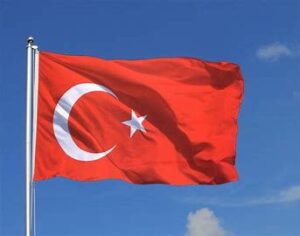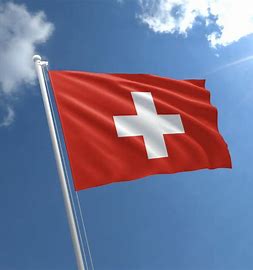
Montenegro Issues a Draft QDMTT Law to apply from January 1, 2026
On November 26, 2025, Montenegro issued a Draft Law to apply a domestic minimum top-up tax (DMTT) from January 1, 2026.
Whilst the treatment of investment property for financial accounting purposes is important when determining the GloBE treatment, of even more importance are any differences between the financial accounting treatment and the domestic tax treatment. In many cases, it is these differences that (subject to GloBE adjustments) will be a determining factor for a low GloBE ETR.
A number of different accounting standards apply to investment property under IFRS. In particular, the acquisition and construction of real estate that is held as investment property is governed by:
IAS 40 (Investment property);
IAS 16 (Property, plant and equipment);
IAS 23 (Borrowing costs); and
IFRS 13 (Fair Value Measurement)
Under IAS 40, entities can adopt either the fair value model or the cost model as their accounting policy for subsequent measurement of investment property. The policy selected must be applied to all their investment property.
Under the fair value model investment property is revalued at the end of each accounting period with unrealised gains and impairment losses being taken directly to the profit and loss account. When a property is sold the base cost for calculating the gain or loss for financial accounting purposes is this carrying value.
This differs significantly from the tax treatment with most jurisdictions using a cost model with changes in fair value ignored.
The fair value model can lead to temporary differences that would result in deferred tax assets or liabilities. Fair value increases for financial accounting purposes would result in a deferred tax liability (ie Dr Deferred Tax P&L, Cr Deferred Tax Liability) that would increase the tax charge in the P&L. Impairment losses would result in a deferred tax asset.
Similarly, enhanced tax depreciation rates can also result in deferred tax liabilities.
GloBE Adjustments
The starting point for the GloBE ETR calculation is the financial account profit or loss and the tax expense (including deferred tax). However, there are then a number of GloBE adjustments and certain elections available. Whilst these are generally not specific to investment property, they will in many cases apply to investment property.
Deferred Tax Liability Recast
As noted above, entities that apply the fair value model for accounting for investment property are likely to have deferred tax liabilities for unrealised gains. However, Article 4.4.1 of the OECD Model Rules requires both deferred tax assets and liabilities to be valued at the lower of the 15% minimum rate and the applicable tax rate. This prevents additional upfront credits for deferred tax liabilities to offset other income in a year. Therefore, a deferred tax liability arising in a high tax jurisdiction would be reduced to the 15% rate.
Article 4.4.4 of the OECD Model Rules includes a recapture rule to claw back certain deferred tax liabilities that aren’t paid within a five-year period. The aim is to prevent significant increases in covered tax when the deferred tax liability is created where there is no corresponding release (which would then reduce covered taxes) when the deferred tax liability unwinds.
This does not apply to:
– accelerated depreciation on tangible assets;
– movements arising from fair value accounting; and
– gains from the sale of tangible property located in the same jurisdiction as an entity that are reinvested in tangible property in the same jurisdiction (so called ‘rollover relief’).
Realisation Basis Election
Article 3.2.5 of the OECD Model Rules provides for an election that replaces the fair value accounting method with the realization method so that gains and losses are only reflected in the Pillar Two GloBE income or loss when assets or liabilities are sold. This will require an adjustment to Pillar Two GloBE income to exclude any gains or losses derived from the fair value method that were reflected in the financial accounts. Deferred tax relating to fair value adjustments would also be excluded from GloBE covered taxes.
This is a five-year jurisdictional election.
Once the election is made, the carrying value of existing property for GloBE purposes is the financial accounting value at the beginning of the year in which the election is made. Property acquired after the election is made is the financial accounting value when the property is acquired (or when the deferred tax liability was incurred, if later).
Capital Gains Carry Back Election
Article 3.2.6 of the OECD Model Rules provides for an election that allows an MNE group to spread gains and losses on sales of local immovable tangible assets over the current year and the previous four years and to match gains with losses.
The intention behind this is to avoid volatility in the ETR calculation that could arise if one-off gains or losses reflected in the financial accounts flowed through into the Pillar Two GloBE income or loss calculation.
The election works by allocating the total gains from all sales of immovable tangible assets in the jurisdiction (aside from intra-group transfers), firstly to any net asset losses starting with the earliest year first (ie the fourth year before the year of the election).
If there are no net asset losses or the loss is insufficient to cover the gain, the remainder is carried forward and offset against the next year (eg year 3).
If any gain remains after the offset of losses, this is then simply pro-rated over the 5-year period and allocated to constituent entities based on their share of the total net asset gain in the election year.
For instance, if total gains were 10 million euros and company A had gains of 8 million euros and company B had gains of 2 million euros, a remaining gain of 5 million would be allocated as 4 million euros to company A and 1 million euros to company B, and be spread over the 5 year period.
The approach is therefore to (1) carry back the gain to a loss year in the lookback period, and then (2) prorate any remaining gain evenly over the lookback period.
Substance-Based Income Exclusion
The substance-based income exclusion is effectively a carve-out for expenditure on tangible fixed assets and payroll costs. The amount of the exclusion feeds directly into the top-up tax calculation as it reduces excess profits which are then used to calculate the initial top-up tax.
However, property held for investment, sale or lease is specifically excluded from the substance-based income exclusion. The reason for this is that the carve-out is intended to provide a measure of relief for MNEs that have genuine physical activities in a jurisdiction – not simply purchasing investment property.
Impact
Significant book to tax differences can mean that even regimes with relatively high headline corporate tax rates could see a much reduced GloBE rate, particularly due to the recasting of deferred tax liabilities for fair value gains.
Even if this does not reduce the GloBE ETR for investment property below 15% when taken in isolation, jurisdictional blending means that it will push the jurisdictional ETR down. If there is other low-taxed income in the jurisdiction this could result in an ETR below 15%.
Example
An entity purchases an investment property for 20 Million Euros. Rental Income is 2.5 Million Euros. At the end of the accounting period there is fair value increase of 1 Million Euros.
Tax depreciation is 900,000 Euros and Interest is 800,000 Euros per year. The corporate income tax rate is 20%.
| IFRS | CIT | GloBE | |
|---|---|---|---|
| Rental Income | 2,500,000 | 2,500,000 | 2,500,000 |
| Fair Value Increase | 1,000,000 | 1,000,000 | |
| Tax Depreciation | 900,000 | ||
| Interest | 800,000 | 800,000 | 800,000 |
| PBT/GloBE Income | 2,700,000 | 800,000 | 2,700,000 |
| Current Tax | 160,000 | 160,000 | 160,000 |
| Deferred Tax | 380,000 | 280,000 (recast) | |
| Total Tax | 540,000 | 160,000 | 445,000 |
| ETR | 20% | 20% | 16.48% |
It should also be noted that in this case, if the realisation method election was made the GloBE ETR would be reduced to 9.41% given the fair value increase and deferred tax would be excluded.

On November 26, 2025, Montenegro issued a Draft Law to apply a domestic minimum top-up tax (DMTT) from January 1, 2026.

On December 1, 2025, Turkey announced an extension in the filing and payment date for the QDMTT return and the opening of a test environment for the submission of the QDMTT return.

On November 26, 2025, the Swiss Federal Council issued an amendment to the Minimum Tax Ordinance to provide for the OECD GIR provisions, as well as some other small amendments.

On November 19, 2025, Hungary enacted Pillar 2 amendments from the 2025 Autumn Tax Package. This includes some amendments to the operation of the Transitional CbCR Safe Harbour.

On November 18, 2025, Slovakia issued its QDMTT Return

On November 14, 2025, Hungary issued a Draft Regulation (for consultation) to provide for the detailed application of the Pillar 2 Safe Harbours.

Italy has issued 2 regulations relating to the Administration of the Pillar 2 top-up tax. A November 7, 2025 Decree provides for more information on the rules for the submission of the GloBE tax return. Resolution no. 63 of November 10, 2025 provides for the tax codes to be used for the payment of top-up tax on the F24 payment form.

On November 3, 2025, Finland issued a draft law for consultation to amend its Minimum Tax Act for the June 2024 and January 2025 OECD Administrative Guidance.

A Communique of October 29, 2025 issued by the MRA provides further information on QDMTT Notifications.
| Cookie | Duration | Description |
|---|---|---|
| cookielawinfo-checkbox-analytics | 11 months | This cookie is set by GDPR Cookie Consent plugin. The cookie is used to store the user consent for the cookies in the category "Analytics". |
| cookielawinfo-checkbox-functional | 11 months | The cookie is set by GDPR cookie consent to record the user consent for the cookies in the category "Functional". |
| cookielawinfo-checkbox-necessary | 11 months | This cookie is set by GDPR Cookie Consent plugin. The cookies is used to store the user consent for the cookies in the category "Necessary". |
| cookielawinfo-checkbox-others | 11 months | This cookie is set by GDPR Cookie Consent plugin. The cookie is used to store the user consent for the cookies in the category "Other. |
| cookielawinfo-checkbox-performance | 11 months | This cookie is set by GDPR Cookie Consent plugin. The cookie is used to store the user consent for the cookies in the category "Performance". |
| viewed_cookie_policy | 11 months | The cookie is set by the GDPR Cookie Consent plugin and is used to store whether or not user has consented to the use of cookies. It does not store any personal data. |